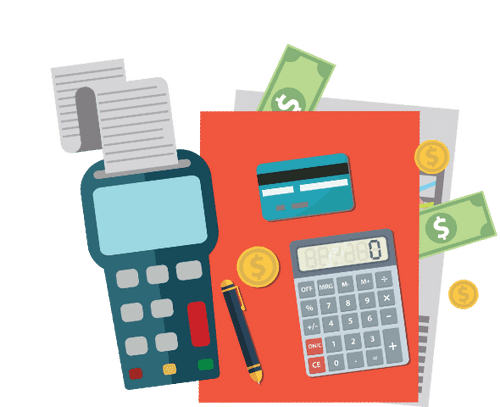In recent years, purchasing a home hasn’t been the easiest for first-time buyers. According to the Canadian Real Estate Association, the average Canadian house price has reached $816,720 – up 20% from 2021. For most people just leaving post-secondary and entering the workforce, their salaries may not be enough to afford a home, let alone qualify for a mortgage. While housing prices might seem alarming, it’s important to know that there are various programs and resources available to help first-time buyers inch closer to their dream of homeownership.
Set realistic expectations of what you can afford
Your first home may not exactly be your “dream” house – but that’s okay! Getting into the real estate market is an accomplishment in itself and it’s important to set expectations for what you can actually afford, especially if your annual salary isn’t yet where you want it to be. These three factors are can help you get a better idea of what your affordability might look like:
- Total income: How much are you making on an annual basis?
- Down Payment: How much do you have saved that can be put toward a home purchase?
- Debt: How much money have you borrowed and are currently paying back? (i.e. student loans, car payments)
For a more accurate picture of your home affordability, we recommend getting pre-approved for a mortgage. It provides more clarity on what you’re eligible to borrow (based on the factors mentioned above), and also allows you to get ahead on your mortgage application. At Homewise, you can easily apply for a pre-approval online in just five minutes!
Take advantage of Canadian government incentives
The Canadian government has introduced several programs to support first-time home buyers who are new to the workforce with growing careers and salaries:
- The First-Time Home Buyer Incentive is a shared equity program with the Government of Canada that offers 5% on the purchase price of resale properties and 10% on the purchase price for new builds to put toward a down payment. This incentive must be repaid to the Canadian Mortgage and Housing Corporation within 25 years or once the property is sold – whichever happens first.
- The Home Buyers’ Plan (HBP) is a seamless way for first-time buyers to tap into existing funds. This program allows you to withdraw up to $35,000 tax-free from a Registered Retirement Savings Plan (RRSP) to buy or build a home. If you’re buying a house with someone else who is also a first-time home buyer, together you’ll be eligible for $70,000. The amount withdrawn, however, must be re-contributed back into your RRSP within 15 years.
- There’s also a Land-Transfer Tax Rebate available to help first-time buyers offset some of the additional costs when buying a home. This refund is incredibly useful as it can be allocated toward other expenses or added into your savings. Note: Depending on the province or city you’re buying in, the amount you qualify for will differ.
Explore different types of lenders
Shopping around for anything you purchase is key to ensure you’re making the right buying decision. If you’re in a lower income tax bracket, this is especially important when you’re looking for a mortgage. When it comes to getting a mortgage, you’ll come across two main types of lenders: A lenders and B lenders. Prime A lenders are traditional institutions such as the big Canadian banks or credit unions, who often work with customers that have strong credit scores and a steady source of income. B lenders are large institutions (such as HomeTrust or Equitable Bank) that offer a lower barrier of entry to qualify for a mortgage and serve as a considerable alternative to those with low income. These lenders typically offset any level of risk with higher interest rates. Luckily, Homewise works with both types of lenders and can provide a full overview of the best options available in the marketplace that best suit you.
Consider getting financial support from family
In 2021, roughly 30% of first-time home buyers received help from family members to purchase a home. Receiving support from family in the form of a “gift” or as a co-signer can give you the additional funds needed to help you achieve your goal of homeownership.
A gift is money that’s given to you by a parent or family member to use toward your down payment. When you are gifted funds, this means that you are not obligated to repay the person and that it’s in fact, not a loan. A co-signer is someone who can help you qualify for a mortgage by applying for the loan with you and legally agreeing to take on the liability if you are unable to make payments. Therefore, your parent or family member’s income would be combined with yours, improving your mortgage application and chances of approval.
Look for a home with rental potential
If you’re buying a home with lower income, consider searching for one that has rental potential. For instance, a fully finished basement and/or with separate door access. Renting part of your home can serve as an additional source of income and help with your monthly mortgage payments until you receive a salary increase. Generally lenders will add half of the monthly rent as an addition to your income to increase affordability. It can take some of the stress out of the situation until you’re able to save more money and have the home to yourself.
While the homebuying process doesn’t come without its challenges, we hope you’ll find that these simple tips get you one step closer to your closing date. At Homewise, our team of dedicated Mortgage Advisors are always here to help! Apply online with us in just 5 minutes and we’ll be happy to walk you through the process from start to finish.
Looking to buy a home soon? Our mortgage affordability calculator will give you a high-level view of your maximum mortgage and home affordability. Check it out here.







